According to the preliminary results announced by the Election Commission of Pakistan (ECP)at the time of writing, Imran Khan’s Pakistan Tehreek-i-Insaf (PTI) has emerged as the largest political party in the country. It has won 115 of the 270 National Assembly (NA) seats on which the elections were held. However, several PTI leaders who have won more than one seat will have to give up additional seats that would reduce the PTI’s immediate tally. Elections were postponed on two NA seats and could be held along with by-elections on the vacated seats. With recounting ordered on at least five NA seats, the final results could differ from the results released by the ECP so far.
The Pakistan Muslim League-Nawaz (PML-N) won 60 seats to the NA, a far cry from its 2013 tally of 126 general seats. The Pakistan People’s Party (PPP) came third with 40 seats. The PML-N could, however, derive some satisfaction that it held on to the lion’s share seats in Lahore. Out of the 14 NA seats, it won 10 in the city with the PTI winning four.
In the Punjab Provincial Assembly, the PML-N, has re-emerged as the largest party, winning 129 of the 295 provincial assembly seats. With the PTI being close behind with 123 seats there is no certainty yet about who will form the government. The other parties are far behind: Pakistan Muslim League- Quaid-e-Azam (PML-Q) with seven, and PPP with six. The support of 28 independents will be crucial in government formation. It could well be a repeat of ‘Changa Manga’ politics of 1988 when Nawaz Sharif hijacked independents and kept them in a guest-house in the forest of Changa Manga till the time came for voting. This enabled him to form the government in Punjab and deny the PPP under Benazir from doing so.
In Sindh, the PPP has emerged as the clear winner with 76 seats in a house of 130. Not only will it form the next government but Murad Ali Shah will again be the CM. The PTI has done surprisingly well in the province, especially in Karachi winning 23 seats while the MQM-P has been restricted to 16. The Grand Democratic Alliance (GDA) could muster only 11 seats. The Khadim Rizvi-led Barelvi party, Tehreek-i-Labbaik Pakistan (TLP), has opened its account winning two seats while the Muttahida Majlis-e-Amal (MMA) could manage only one. Interestingly, no independent candidate won a seat in Sindh.
The results of Karachi, too, were significant. The city has 21 seats in the NA and 44 in the Sindh Assembly. PTI emerged as the single largest party in the city winning 14 NA seats while MohajirQaumi Movement-Pakistan (MQM-P) was reduced to only four. The biggest surprise was that the Pakistan Sarzameen Party (PSP) was not able to win even one seat with its candidates coming in fifth or sixth position in several constituencies. Its leader Mustafa Kamal lost in all three constituencies (one National Assembly and two provincial assembly) he had contested from. The PSP, widely perceived as the establishment’s party for daring to challenge Altaf Hussain, was obviously seen by the Karachi voter as a ‘traitor’ who deserted the party and the Mohajir cause.
In the Khyber Pakhtunkhwa (KPK) assembly, the PTI quite possibly surprised even itself by winning 66 seats of a total of 97 on which the elections were held. As observers are quick to point out, this is the first time in Pakistan's electoral history that an incumbent party has returned to power in KPK. The MMA came a poor second with only 10 seats, while the Awami National Party (ANP) was reduced to six and the PPP to four. Six independents have also won. The PTI’s return to power in KPK is largely due to police reforms and some improvements in healthcare and education.
The electoral verdict in Balochistan, as always, is fractured. The BalochistanAwami Party (BAP) has emerged as the largest party with 15 seats, while the MMA is in second place with nine. Rest of the seats are distributed between the Balochistan National Party (BNP) (6), PTI (4), BNP-Awami (3), Hazara Democratic Party (HDP) (2), JamhooriWatan Party (JWP) (1), PML-N (1) and independents (5). Pashtun stalwart Mahmood Khan Achakzai's Pakhtunkhwa Milli Awami Party (PkMAP) has managed only a single seat.
A notable feature of the electoral verdict was who won and who lost. Imran Khan won all five seats from where he had contested the elections- Islamabad, Mianwali, Karachi, Lahore and Bannu. PML-Npresident Shahbaz Sharif, who had contested from four constituencies won only in Lahore, losing in Karachi, Swat and Dera Ghazi Khan. Bilawal Bhutto-Zardariwho contested from three constituencies lost in Malakand and Lyari, both to PTI candidates. However, he managed to win from his native constituency in Larkana.
Maulana Fazlur Rehman, AsfandyarWali Khan, Mehmood Khan Achakzai, Sirajul Haq, Nisar Ali etc were the big losers. Jamiat Ulema-i-Islam Fazl (JUI-F) chief Maulana Fazlur Rehman lost in his traditional hometown Dera Ismail Khan (NA-39). AsfandyarWali Khan, who heads the ANP lost the elections from his native Charsadda constituency (NA-24). Jamaat-i-Islami (JI) chief Senator Sirajul Haq, suffered a defeat in his native Lower Dir. Chaudhary Nisar Ali Khan, who had won every election since 1985, lost both seats (NA-59 and NA-63) in Rawalpindi district. He was contesting as an independent.Former prime minister Shahid KhaqanAbbassi also lost the two seats he contested in Islamabad and his home town of Murree.
A significant aspect of the election was that “electables” from the PPP who had recently switched to the PTI, like Nazar Mohammad Gondal, Nadeem Afzal Chan and Firdous Ashiq Awan, lost the elections. Clearly, the voters did not think much of their decision to switch loyalties.
Three elements in the elections could have played an important part in the final outcome. One was the undecided voters identified at about 12 percentof the electorate by several polling organisations. How this segment voted would have been critical in tilting the balance in favour of one party. Second was the entry of the hardline religious parties as well as the revival of the MMA. This ensured that the religious vote would get split. While the TLP and the MML did not win any NA seats, they would have dented the conservative religious vote bank of the PML-N in several constituencies. Third was the greater use of social media to reach out to the electorate and influence their opinions. Maryam Nawaz was especially active on this score. Other political parties, too, set up their own social media cells. Such canvassing was especially important for reaching out to the youth.
Government Formation
Article 91(2) of the Constitution requires the NA to be convened by the President within 21 days after a general election. The new assembly must first elect a speaker and then, to the exclusion of all other business, vote to elect a prime minister.
Though the largest party, the PTI does not have a majority. It would need to increase its tally to 137 needed for a simple majority. Not surprisingly, it has started the process of seeking support of independents and the smaller parties like the PML-Q (4 seats), BAP (4 seats), Grand Democratic Alliance (GDA) (2 seats), Awami Muslim League of Sheikh Rashid(1) and possibly the MQM-P(6 seats) to be able to form the next government.
Even after cobbling a majority, the PTI would face a major handicap. It has only 12 members in the Senate. This number will change only after three years when half of the Senate members would retire. Except for a money bill, both houses have to approve all legislations. Thus, the PTI would be dependent on other parties and independents in the 104-member upper House to get any law approved in the Senate.
Electoral Process
The electoral process was marred by three significant developments. First, this was clearly one of the nastiest election campaigns in the recent history. The use of intemperate language and personal attacks was a notable feature. Even Imran Khan was guilty of indulging in mud-slinging. Bilawal Bhutto, on the other hand, came to notice for not lowering his campaign to personal attacks. His focus on promoting the party manifesto has been acclaimed as a sign of growing political maturity. This could be a good augury for the future.
Second, the run-up to the elections were marred by pressure on the PML-N legislators to quit the party, especially in south Punjab, restrictions on the media and the participation and open campaigning of terrorist groups and violent sectarian outfits.
Third, there was clearly delay in counting of ballot papers. The ECP attributed this to a technical fault in the Result Transmission System (RTS) — a software used to relay results from presiding officers to the commission. Foreign observers have also called for the commission to improve the process of counting ballot papers.Delays in the compilation of results provided political parties the perfect excuse to raise doubts on the credibility of the poll exercise.
Violence
Electoral violence was quite severe in the run up to the elections, especially in Balochistan and Khyber-Pakhtunkhwa. It claimed 180 lives and injured 200 people. Attacks in Bannu, Chaman, and Mastung targeted security forces, candidates and their followers. The blast in Mastung on 13 July at a political rally killed 140 people.
As against the pre-poll violence, violence on polling day was limited and by and large the elections were peaceful. The only exception was the Quetta suicide attack that accounted for more than 30 lives.
Rigging Allegations
Almost all mainstream parties, except PTI, seem to have come together on a single-point agenda alleging that the elections were rigged. Shahbaz Sharif out rightly rejected the poll results claiming ‘manifest and massive irregularities’. Others have highlighted the delay in receiving official results, slow-polling tactics, and maltreatment of polling agents at polling stations across the country. An important allegation made by these parties is that their polling agents at many polling stations were not provided copies of the legally mandated statement (form 45) of count.
A multi-part conference chaired by PML-N president Shahbaz Sharif and MMA president Maulana Fazlur Rehman was held in Islamabad on 27 July. It was attended by leaders of various other parties like the Awami National Party, the Jamaat-i-Islami, Pakhtunkhwa Milli Awami Party, the National Party, the Pak Sarzameen Party etc. However, the PPP and the MQM-P did not attend though Farooq Sattar of the latter was present. The conference rejected the results of the election and announced a joint protest movement against rigging and massive irregularities in the polls. It also demanded transparent re-election. The effort to push for their elected representatives not taking the oath in protest, however, caused differences. Shahbaz Sharif, looking to form the government in Punjab, stalled the move by holding that the central executive committee of his party would discuss the issue before announcing a final decision.
While these parties are likely to pursue the rigging allegations legally, the moot point is about street agitation. The opposition would have to demonstrate staying power, finances and organizational capacity to mount a challenge. So far, the PML-N has been an establishment party and has not demonstrated the will and hunger for sustained street agitation. It would also be handicapped in case it is not able to form a government in Punjab. The consensus at present seems to be that the opposition parties do not have the stamina to launch an agitation at the moment. There is also no charismatic leader that can lead the charge. The PPP would rather hold on to forming a government in Sindh while the PML-N is concerned about its shrinking power base in Punjab. Thus, it would be premature to say if allegations of rigging could lead to street protests just like what the PTIhad done after the 2013 elections.
The election process and Imran Khan have, however, got a boost from the preliminary reports of two international election observation missions — from the European Union and the Commonwealth. According to them, the army troops at polling stations did not take over the polling process and only assisted the presiding officers in the general elections.They, however, expressed concern over the environment in which the elections were held. Apart from highlighting the need for improvement in the procedure for counting of ballot papers their concern included: a number of violent attacks thattargeted political parties, party leaders, candidates and election officials; a systematic effort to undermine the former ruling party through cases of corruption, contempt of court cases and terrorist charges against its leaders and candidates; and politicisation of the judiciary leading to reshaping the political environment ahead of the elections. They also highlighted the emergence of extremist parties with affiliations to terrorist groups, or individuals linked to organisations that have used, incited or advocated violence.
Imran Khan’s assurance to fully cooperate in investigating the rigging claims could help diffuse tensions. They could provide the opposition with an exit to avert protests. Imran has obviously learnt from the refusal of the PML-N government to allow verification of rigging claims in the 2013 elections that became the prime cause for his dharnapolitics. Interestingly, Imran’s offer is limited to the polling day and not the allegations of pre-poll rigging that the media and organisations like the Human Rights Commission of Pakistan had pointed out.
(Tilak Devasher is the author of ‘Pakistan: Courting the Abyss’ and ‘Pakistan: At the Helm’. He is a former Special Secretary, Cabinet Secretariat, Government of India)
(The paper does not necessarily represent the organisational stance. The author certifies that the article/paper is original in content, unpublished and it has not been submitted for publication/web upload elsewhere, and that the facts and figures quoted are duly referenced, as needed, and are believed to be correct).
(The paper does not necessarily represent the organisational stance... More >>
Image Source: https://news.parhlo.com/wp-content/uploads/2018/02/B-1024x512.jpg

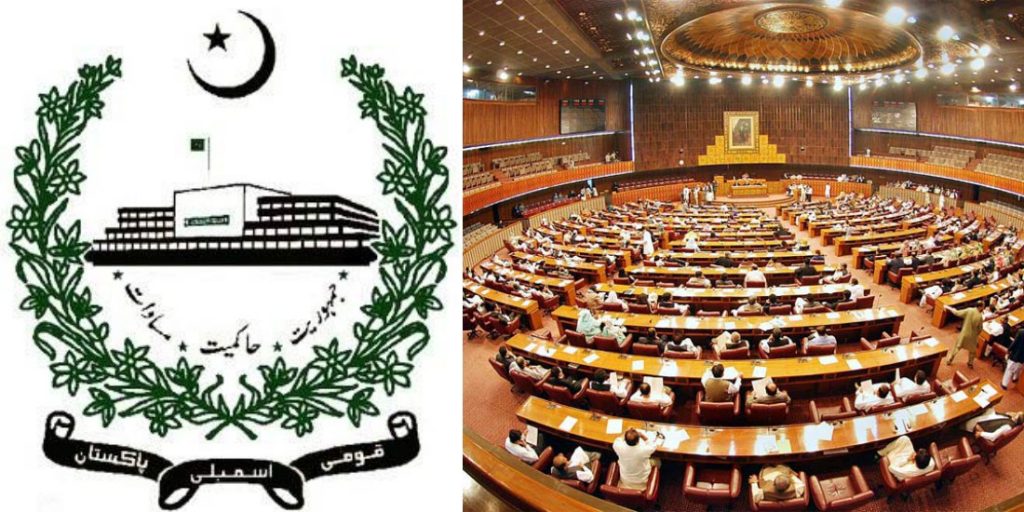
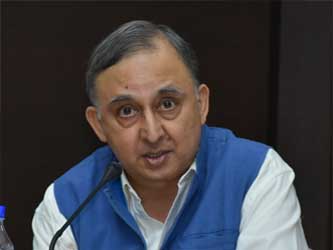
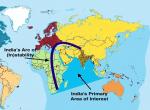

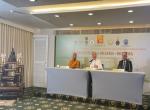


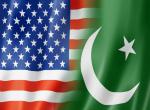
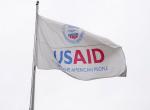
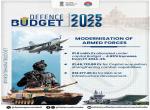
Post new comment